Summary
In 2020, we were hit with the COVID-19 pandemic and we’re all still waiting to find out if the world will ever be the same again. During this time, people were encouraged to social distance, but essential services had to remain open in spite of the risk.
Did wages increase during this time for jobs deemed “essential work”? How much did essential worker pay increase over the course of the pandemic and which occupational groups saw the highest wage increases? More importantly, how do employees feel about their jobs during this time — and do they feel that their pay is fair? Payscale looked at our Employee Reported Data (crowdsourced from our online salary survey profiles) to find out.
Individuals who are curious about how their pay stacks up to others in the same position should take our salary survey and create a profile with Payscale. It’s free and your participation helps us in our mission to democratize salary data for all.
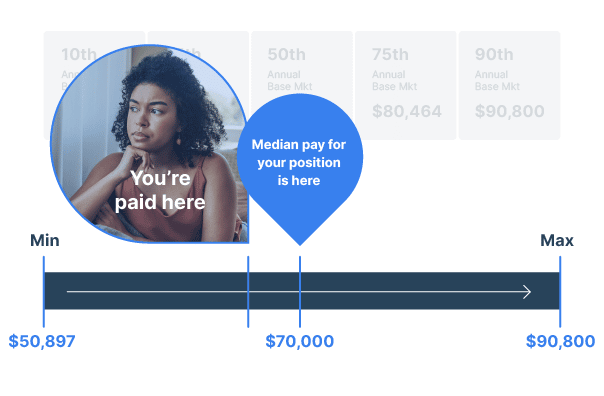
What is an essential worker?
Before we talk about how essential worker pay has increased, let’s first define what an essential worker is. Essential workers provide services that are critical to the functioning of society. In the context of the pandemic, essential workers have been referred to as front-line workers because their duties are performed in-person or on-site in a manner that puts them at greater risk for contracting COVID-19. Examples of essential workers include healthcare workers, food service workers, transportation workers, and law enforcement.
Many essential services are performed by low paid workers, and the trials of the pandemic highlighted that many essential workers are also not entitled to basic healthcare, sick days, or safety measures necessary to protect them as well as others. This reality is connected to the Great Resignation or Great Reevaluation that followed, as well as an increase in unionization efforts.

Essential worker pay trends by job group
Cleaning and Groundskeeping
COVID-19 required increased focus on sanitation and safety, but even without the pandemic, cleaning and groundskeeping work is an essential service that cannot be stopped or transitioned to working from home.
The most common jobs from Payscale’s salary survey in this occupational group include maid or housekeeper, custodian/janitor, and laborer. The median pay for these essential worker positions increased substantially between 2019 and 2022 compared to other essential worker positions in this list, at 20 percent, 17 percent, and 18 percent respectively.
However, sentiment around fair pay is low for these positions. For maids and housekeepers, only 21 percent agreed or strongly agreed that their pay was fair in 2019. This increased to 26 percent in 2020 and then dipped to 23 percent in 2021. For custodians, fair pay sentiment was at 18 percent in 2019, rose to 20 percent in 2020, and then dropped to 15 percent in 2021. For laborers, fair pay sentiment was stronger in 2019 at 26 percent, but decreased to 23 percent in 2020 and 21 percent in 2021.
Overall, this group of essential workers had lower fair pay sentiment throughout the pandemic than other occupational groups, but also some of the higher pay increases.
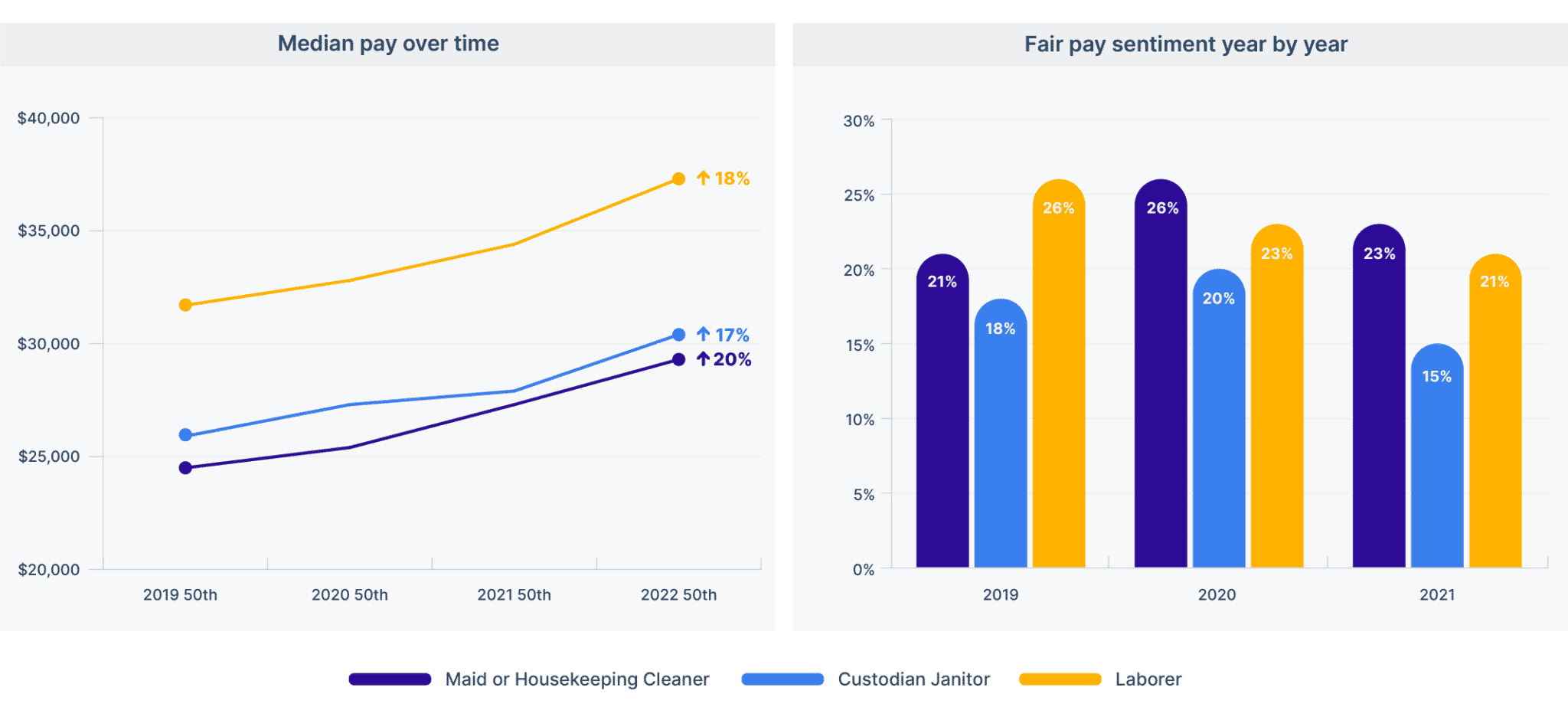
Construction
Construction has had a difficult time during the COVID-19 pandemic. Lockdowns, supply chain issues, and labor strikes made projects difficult to manage, but also forced innovation in the industry.
The most common jobs from Payscale’s salary survey in this category are project managers, superintendents, and electricians. Despite the challenges construction workers have endured throughout the pandemic, pay increases have been tepid, with a 9 percent total increase for electricians since 2019, 8 percent for project managers, and only 6 percent for superintendents. Pay increases were less than 3 percent most years and in the negatives some years for some positions.
However, this occupational group makes more at the median than the cleaning and groundskeeping occupation. A higher percentage of essential workers in construction also feel that their pay is fair, averaging in the mid to high twenties. Electricians are the most likely to feel their pay is fair, at 30 percent in 2019 and 29 percent in 2021 with a decrease to 26 percent in 2020.
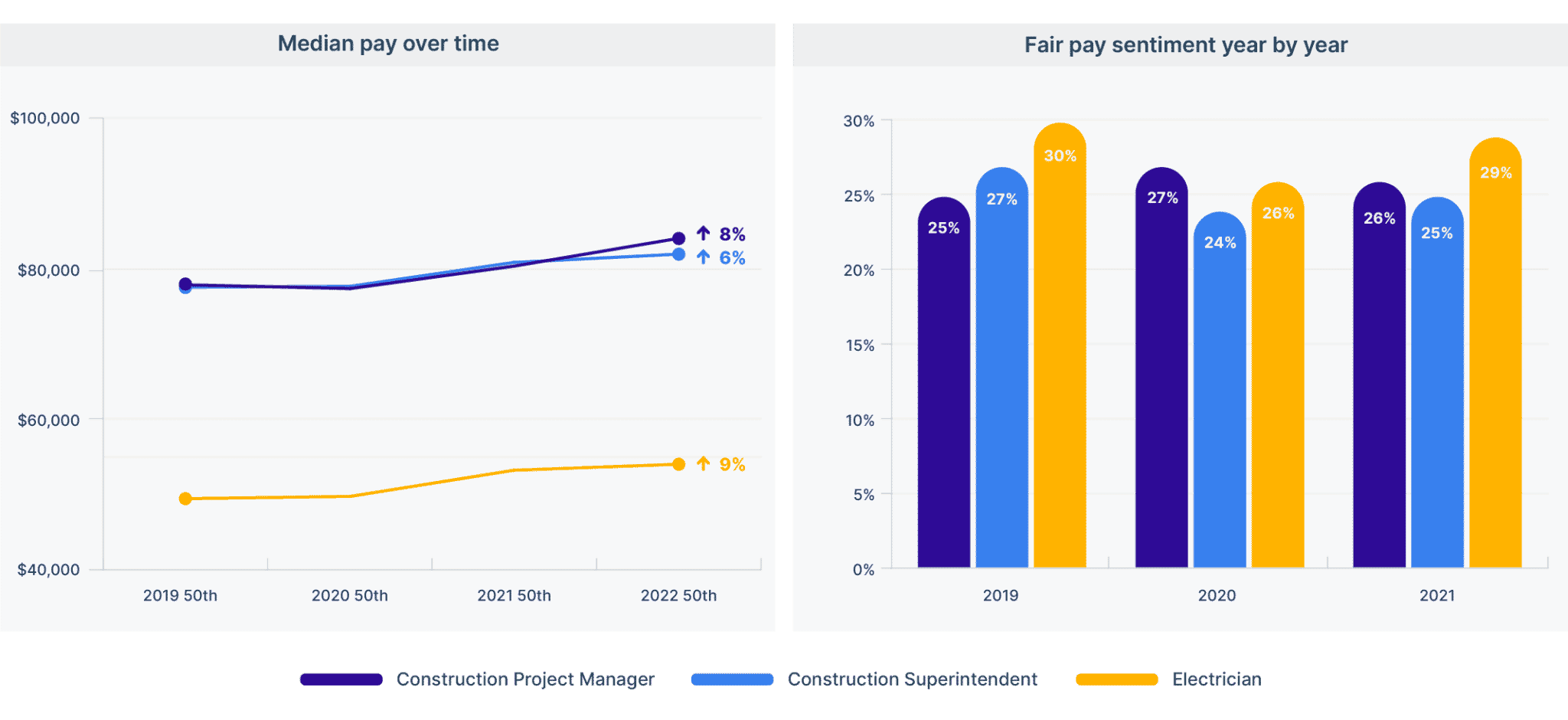
Food Service and Restaurant
One of the most stressed industries during the COVID-19 pandemic was food service. Not only did lockdowns result in chaotic work scheduling and loss of staff, but restaurants were also riskier for essential workers as patrons would need to go unmasked to eat and drink.
The most common essential worker jobs in this occupational category from Payscale’s salary survey include line cooks, restaurant managers, and waiter/waitresses. Wages for these positions tend to the lower end of the spectrum, with restaurant managers making the most at a median of $40,500 in 2022. However, wages have increased substantially for some of these occupations during the pandemic. Although restaurant managers have seen tepid wage increases totaling only 5 percent, line cooks have seen a 17 percent increase in wages since 2019 and waiters and waitresses have seen a whopping 25 percent increase.
When it comes to fair pay, waiters and waitresses are on the higher side of feeling that their pay is fair compared to other jobs (at over 31 percent). However, this has dipped from 36 percent in 2019 — before the pandemic — despite the substantial increase in wages. Meanwhile, line cooks have seen a gradual increase in fair pay sentiment from 18 percent in 2019 to 22 percent in 2021. On the other hand, restaurant managers have seen a decline in fair pay sentiment from 20 percent in 2019 to 18 percent in 2021, which is in line with how wages for this job have stagnated compared to other positions.
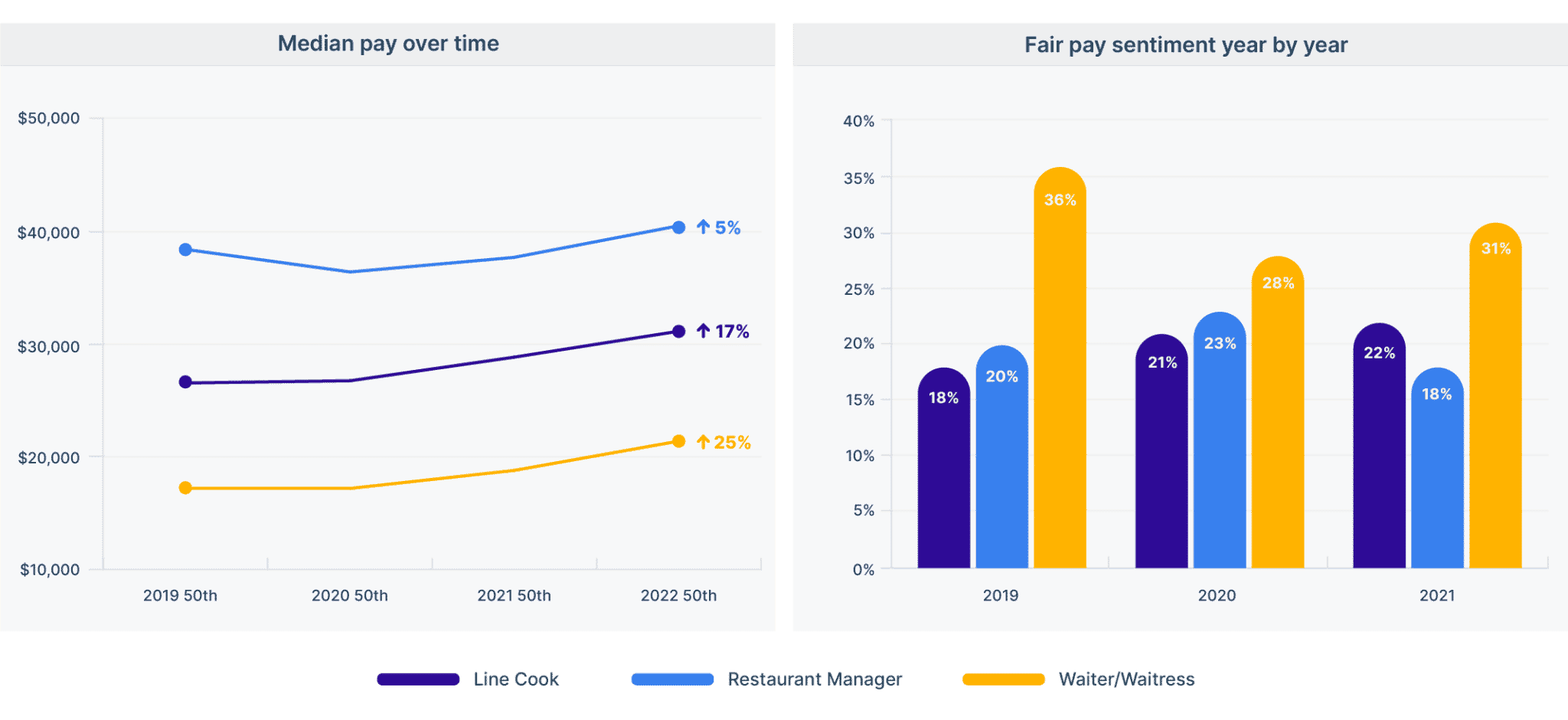
Installation and Maintenance
Maintenance is always necessary, even in a pandemic. People need things, and when they break, they need them fixed. The most common jobs in this essential workers occupational group in Payscale’s salary survey are maintenance technicians, automotive service technicians/mechanics, and heating, air conditioning, or refrigeration mechanics or installers.
This occupational group saw middling wage increases for maintenance technicians (13 percent since 2019) and automotive mechanics (9 percent since 2019) and higher wage increases for heating, air conditioning, and refrigeration mechanics (19 percent). However, no job in this occupational group strongly feels that their pay is fair, with percent averages hovering in the low twenties and ultimately decreasing in 2021 compared to 2019.
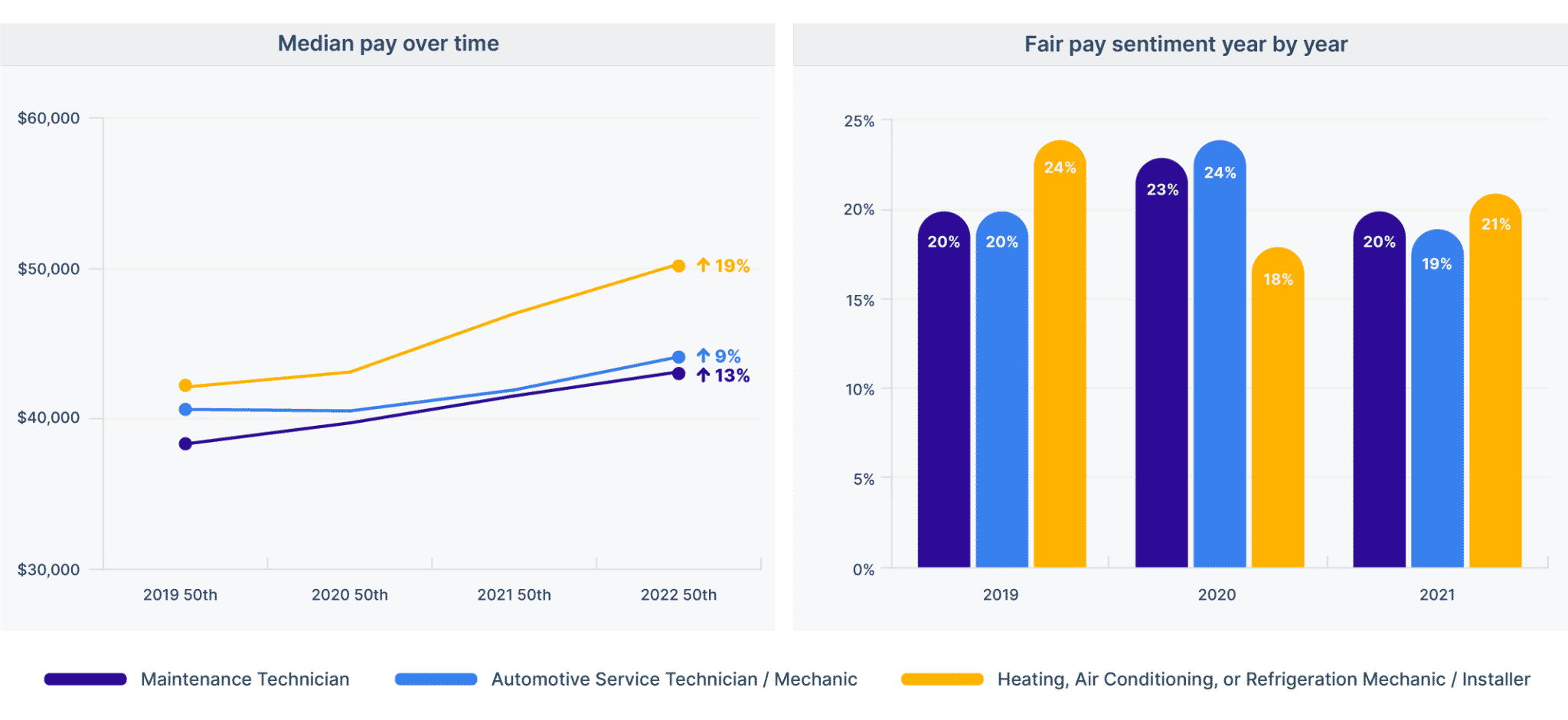
Law Enforcement
Law enforcement has faced increased scrutiny and stress over the last few years, from protests associated with the Black Lives Matter movement, to a surge in homicides and other crimes, to mental health crises exasperated by the COVID-19 pandemic.
The most common jobs in this occupational group in Payscale’s salary survey are intelligence analysts, correctional officers, and police or sheriff patrol officers. The perception that pay is fair has plummeted for intelligence analysts, from 33 percent in 2019 to a mere 13 percent in 2021. Correctional officers have also seen a drop in the perception of fair pay, from 33 percent in 2019 to 25 percent in 2021. Fair pay perceptions for police and patrol officers have increased from 22 percent in 2019 to 28 percent in 2021 with a dip to 20 percent in 2020 when the job may have been under the heaviest strain.
These largely negative perceptions map to wage increase trends, with intelligence analysts seeing a pitiable increase of only 2 percent since 2019, correctional officers seeing moderate pay increases of 15 percent, and police and patrol officers seeing their median pay actually decrease by 7 percent from 2019 to 2022. The wage increases and fair pay trends for law enforcement suggest that these essential worker jobs may be in jeopardy.
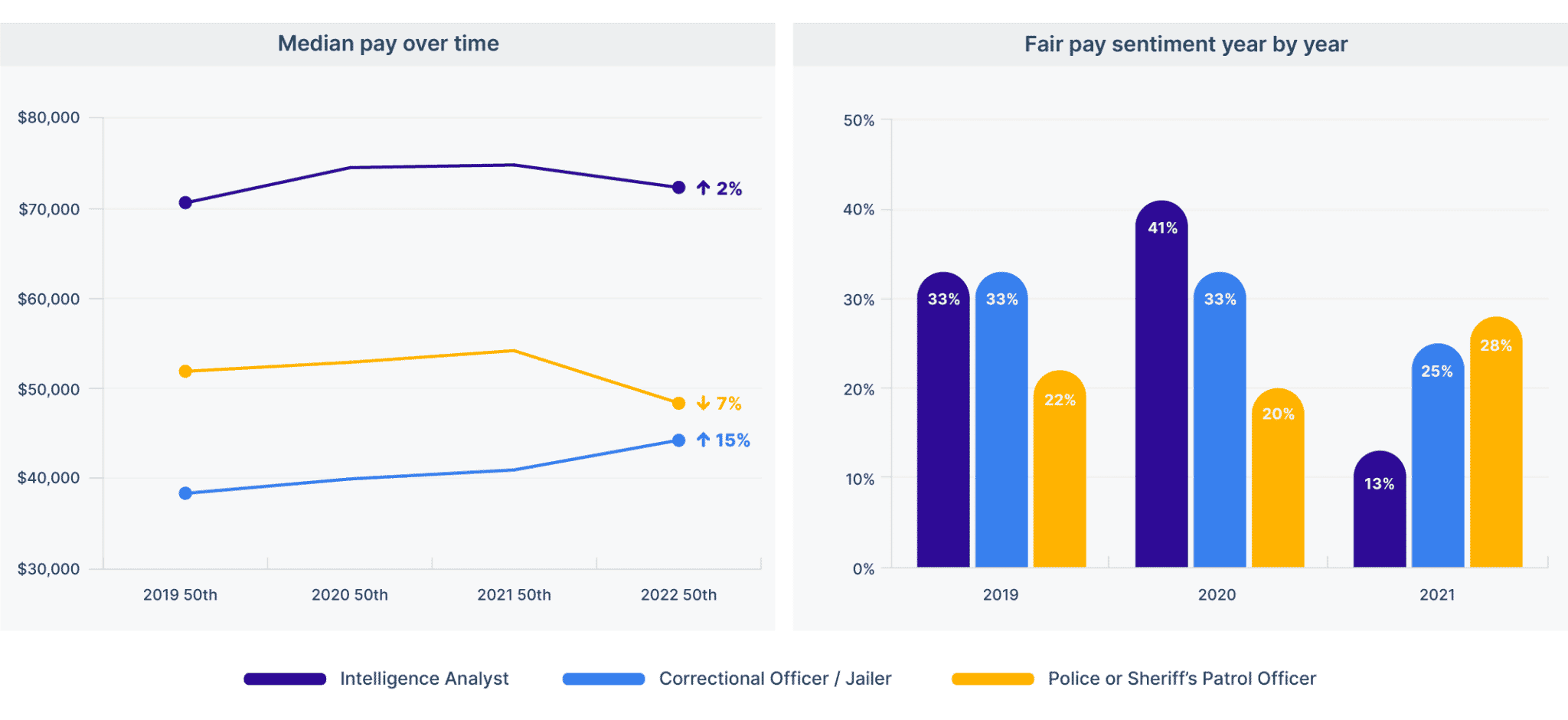
Manufacturing and Production
Lockdowns and supply chain issues during the COVID-19 pandemic created challenges for manufacturing and production, an occupational group that is critical to the economy. The most common jobs in Payscale’s online salary survey for this category are production supervisor, quality assurance manager, and heavy equipment operator.
Essential worker pay for these occupations has increased a middling amount compared to other jobs in this study. Wages for production supervisors and quality assurance managers rose 12 percent since 2019 while wages for heavy equipment operators rose only 10 percent. Over three and a half years, these wage increases average out to just over three percent a year but are well below inflation in 2022 — especially for heavy equipment operators, who also bring home the smallest median salaries.
Unsurprisingly, the perception of fair pay has decreased for heavy equipment operators, from 23 percent in 2019 to 19 percent in 2021. However, the perception of fair pay has increased for quality assurance managers from 19 percent in 2019 to 21 percent in 2021. It has stayed the same for production supervisors.
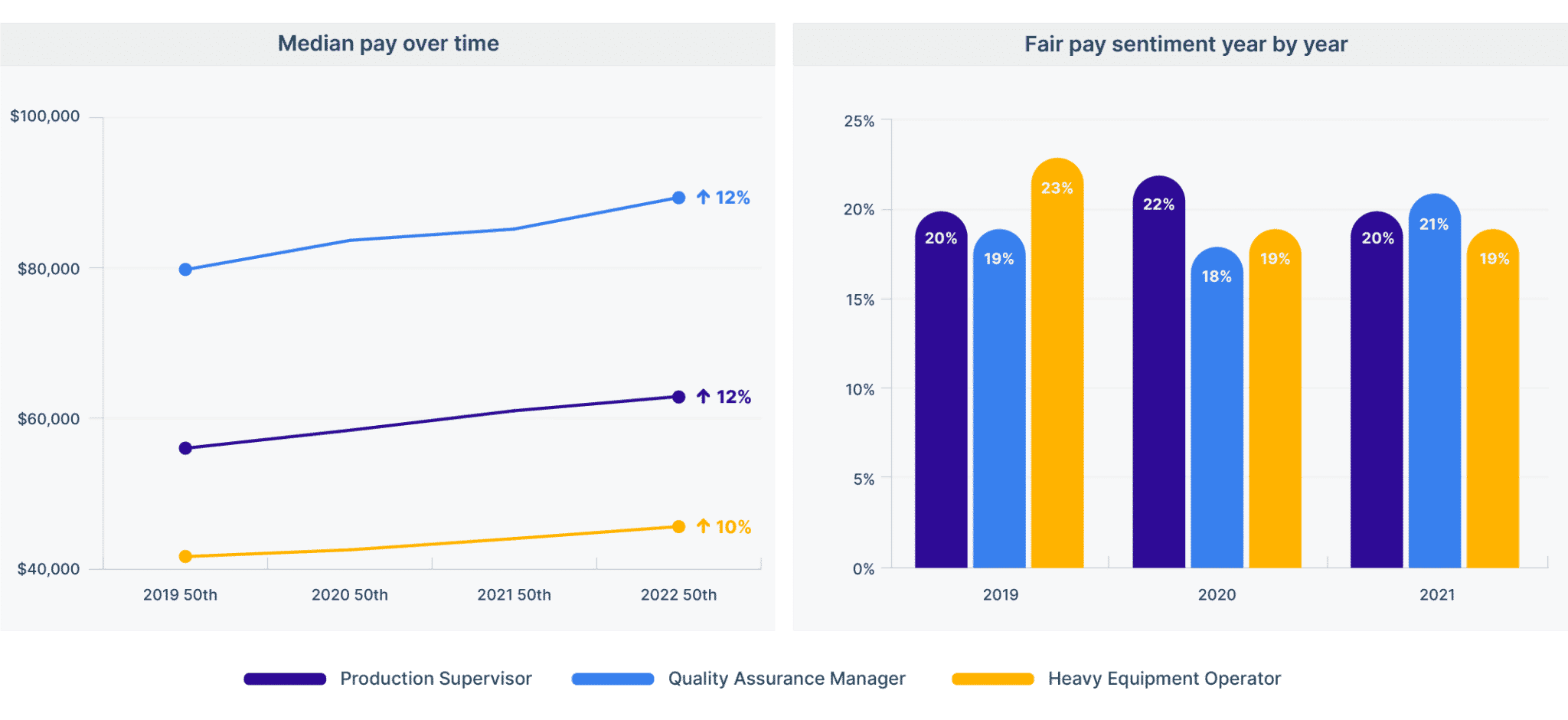
Registered Nurses
Nurses have seen accelerating demand since the pandemic. There are a lot of different kinds of nurses, but we chose to look at registered nurses (RNs) to analyze essential worker pay. The most common job titles for registered nurses in our online salary survey are generic registered nurses, registered nurses for critical care, and registered nurses for the emergency room.
All of these types of nurses have been in growing demand. Wages have also been increasing for these positions. However, wage growth for nurses is more middling than you might expect. Wages for generic registered nurses have grown 14 percent since 2019. However, wages for registered nurses in critical care have risen only 11 percent and wages for registered nurses in emergency rooms have risen only 10 percent. The pay increases look steeper because nurses have a higher median pay than many other essential service professions.
Unsurprisingly, the perception nurses have that their pay is fair has dropped over time, from 24 or 25 percent for all types of nurses down to 20 percent for generic registered nurses, 21 percent for emergency room nurses, and just 15 percent for registered nurses in critical care. In a previous report, Payscale showed a strong correlation between fair pay perception and intent to leave. Because the demand for nurses is so high and wages for current employees are not keeping up with the market, there is a lot of incentive for nurses to seek new jobs in order to increase their salaries.
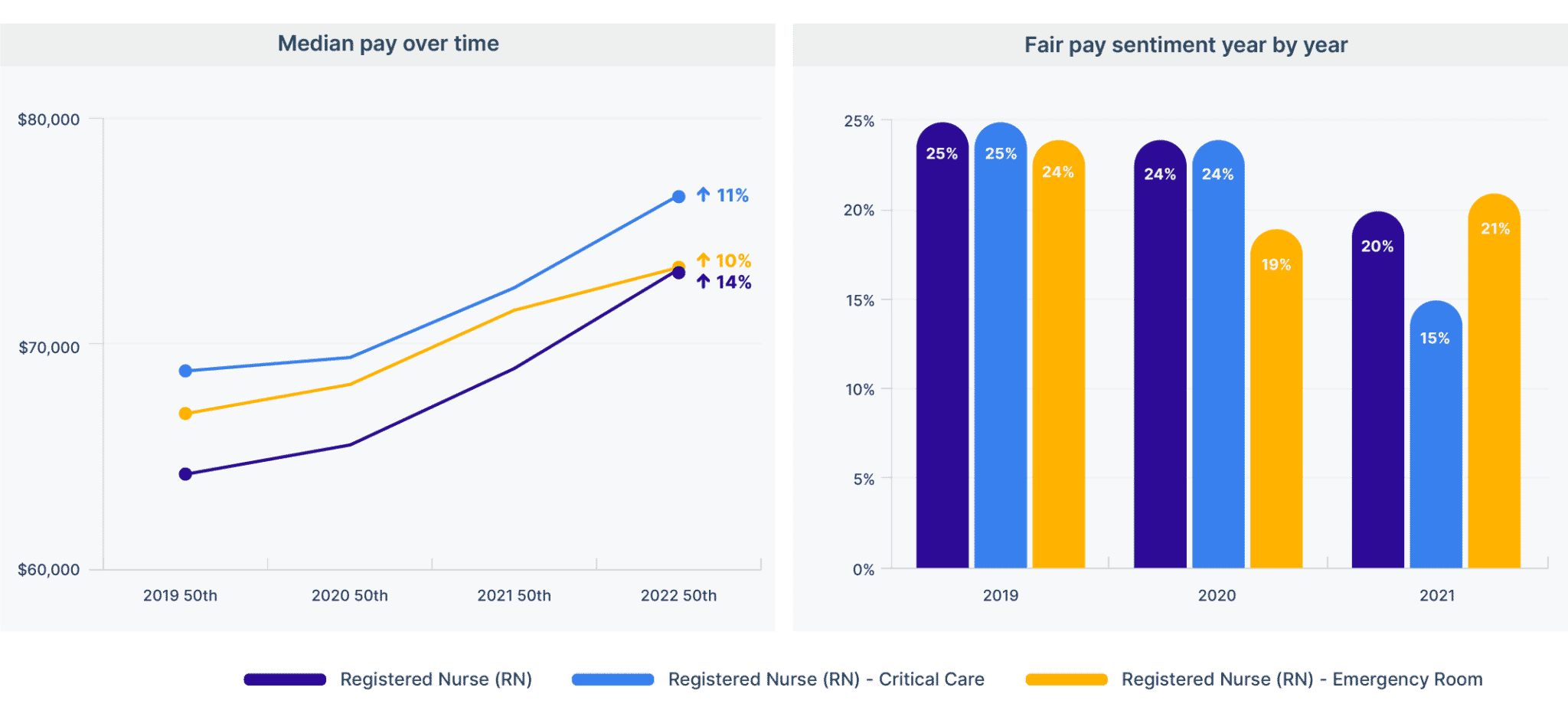
Retail
Essential workers in the retail industry include cashiers, retail store managers, and sales associates. Retail has had a mix of challenges during COVID-19, with brick-and-mortar stores needing to stay open but doing less business during lockdowns while online shopping has surged. Retailers have had to adapt to the situation, from implementing new safety measures to changing business operations in order to improve e-commerce and buy-online-pick-up-in-store (BOPUS) experiences.
Wages have increased for retail workers. Cashiers and sales associates have seen wage increases of 17 percent and 19 percent between 2019 and 2022, respectively, which is on the higher end of the occupations we’ve studied. However, retail store managers have only seen a 13 percent increase, which is a middling amount. The median salaries for retail positions are also among the lowest of the occupations studied.
When it comes to perception of fair pay, cashiers and sales associates have seen the sharpest declines, despite also having larger wage increases. The percentage of cashiers who viewed their pay as fair dropped from 24 percent in 2019 to 19 percent in 2021. For sales associates, fair pay perception dropped from 21 percent to 16 percent. By contrast, retail store managers have seen a modest increase in fair pay perception from 19 percent in 2019 to 22 percent in 2021.
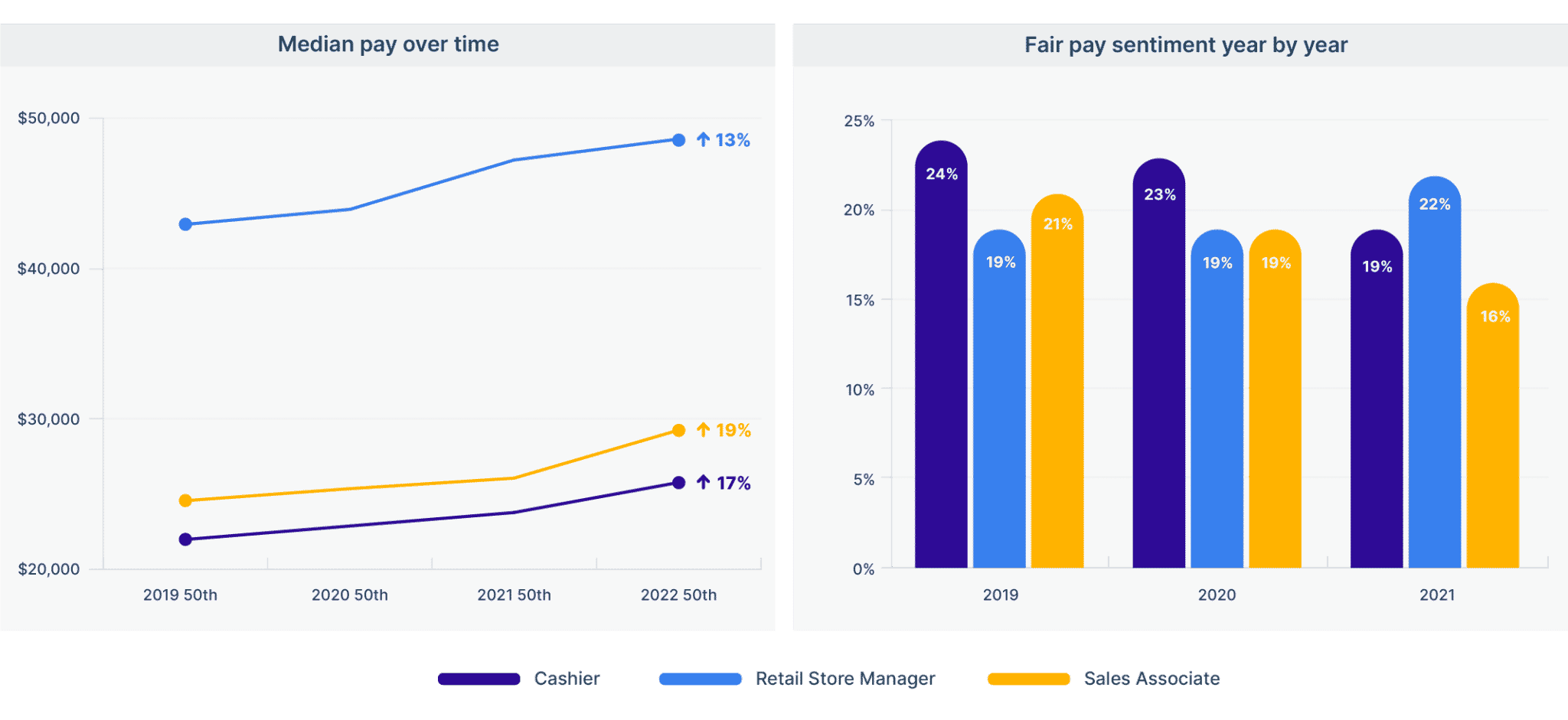
Social Services
The pandemic has been hard on the economy, but it has also been hard on people’s mental health. Some of the top occupations for essential workers in Payscale’s salary survey under social services include social workers, medical case managers, and program directors of nonprofits.
Wage increases for the jobs in this occupational group have been middling to low. Social workers have seen wage increases of only 10 percent, program directors of nonprofits 12 percent, and medical case managers 14 percent. The rise has been most rapid for medical case managers in the last year at 7.9 percent, followed by program directors of nonprofits at 6.1 percent from 2021 to 2022.
Sentiment around fair pay is the lowest for program directors of nonprofits — the lowest of all the essential worker occupations studied for this report — at 11 percent in 2021, dropping from 17 percent in 2019. Fair pay sentiment has also dropped for social workers from 24 percent in 2019 to 21 percent in 2021. For medical case managers, it has remained the same at 20 percent in both 2019 and 2021 with a significant drop down to 13 percent in 2020.
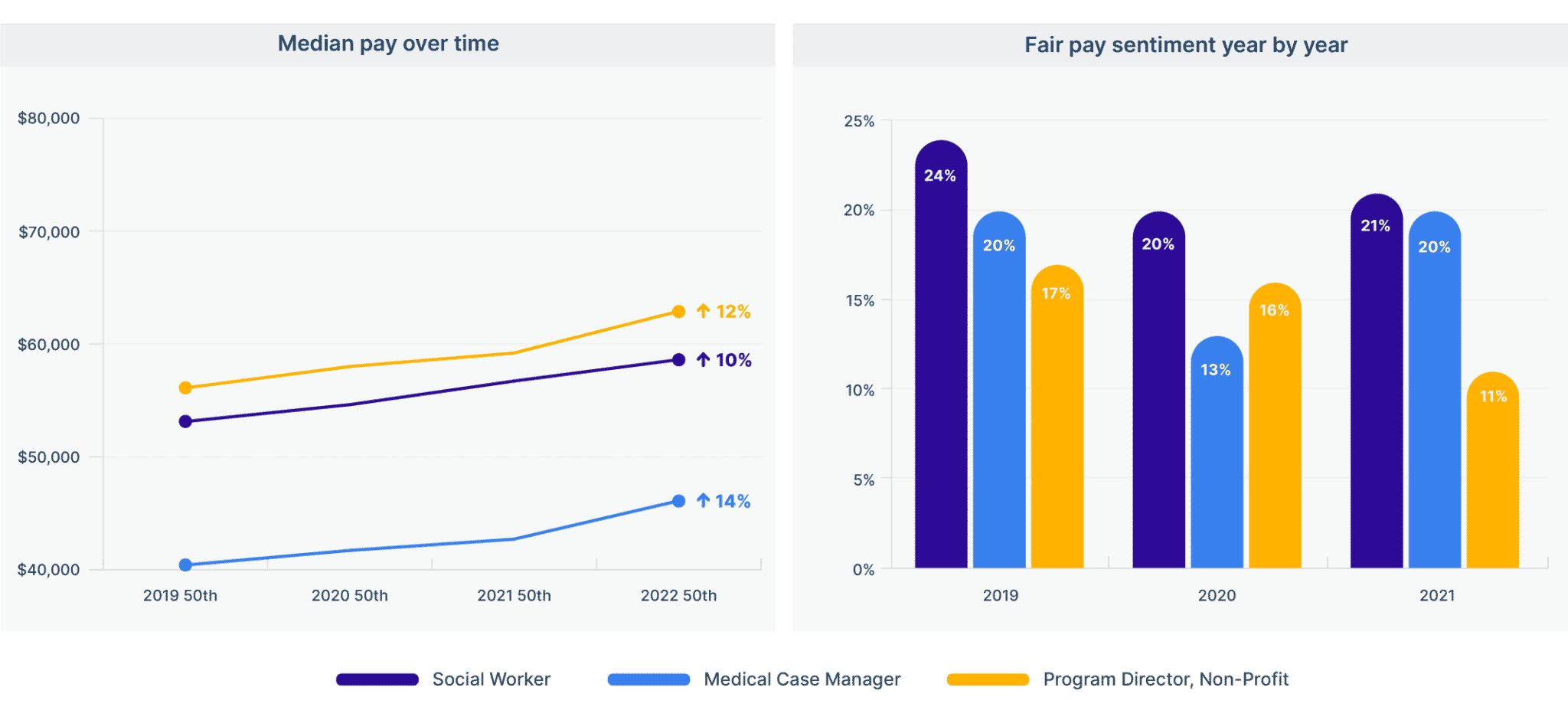
Transportation
Lockdowns associated with the pandemic resulted in more online shopping, which required more fulfillment. Warehouse workers, warehouse managers, and delivery drivers top the essential worker jobs with the most salary profiles in Payscale’s online salary survey for this occupational group.
Wages for warehouse workers and delivery drivers increased by 17 percent between 2019 and 2022. Wages for warehouse managers increased by only 13 percent. Warehouse manager wages increased the most (9 percent) in 2021, but only 2.6 percent in 2020 and 1.1 percent in 2022. Even so, this occupation earns the most at the median compared to the other two jobs in this group.
When it comes to fair pay sentiment, none of these jobs in the transportation group are particularly optimistic. The perception of fair pay has dropped from 24 percent in 2019 to 22 percent in 2021 for warehouse workers and from 22 percent in 2019 to 18 percent in 2021 for delivery drivers. Fair pay perception for warehouse managers has increased from 15 percent in 2019 to 16 percent in 2021, but this is still lower than most other essential worker occupational groups studied.
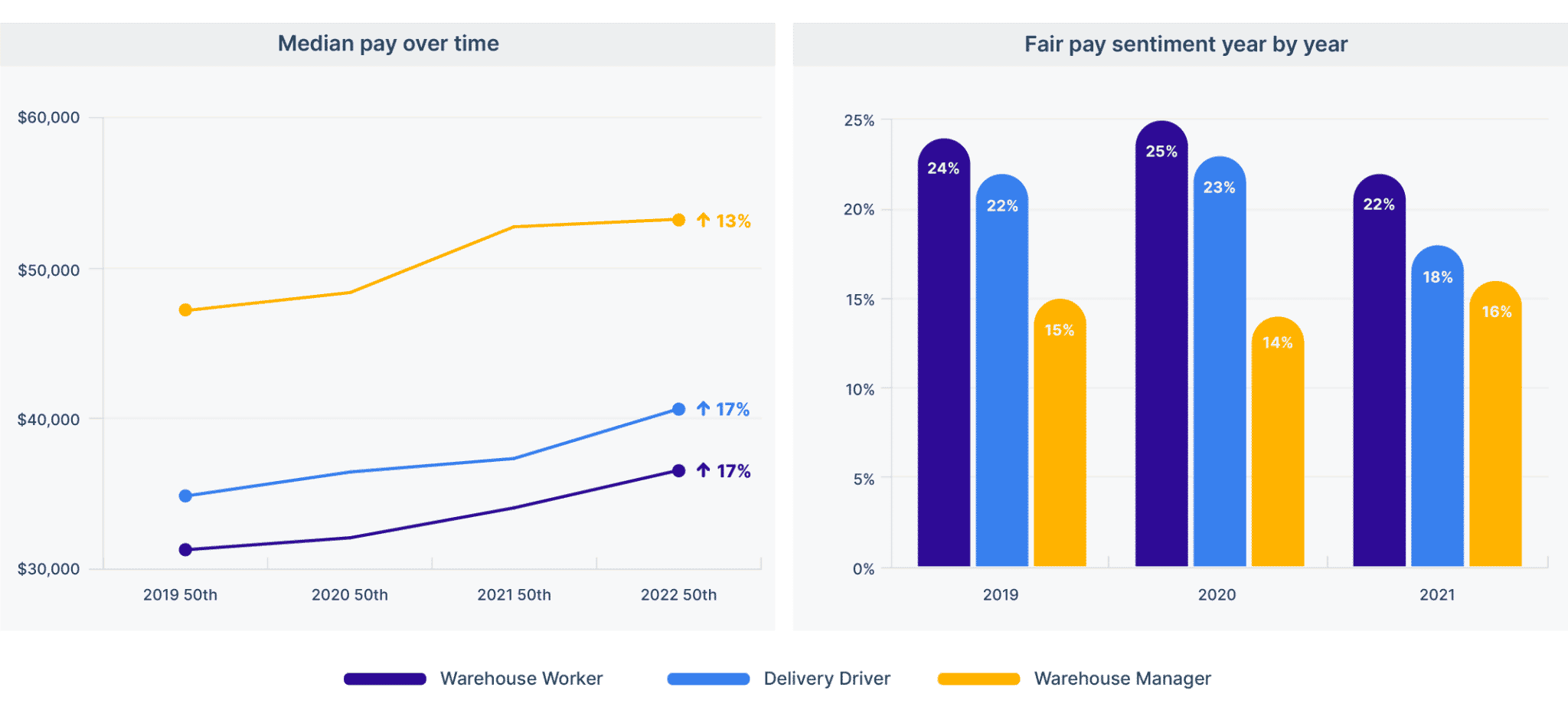
Further job sentiment analysis
For this essential worker pay trends report, Payscale also looked at multiple indicators associated with job satisfaction. In our online salary survey, we ask about whether essential workers believe their pay is fair (fair pay sentiment) as well as how transparent they believe their employers are about their pay (pay transparency). From previous analysis, Payscale finds a correlation between pay transparency, perception of fair pay, and intent to leave.
In addition to pay, our job sentiment analysis includes job sentiment trends around employer satisfaction, employer communication, and employer appreciation. The percentages associated with each job show what percentage of essential workers indicate that they are happy with their employers in these categories, which has more to do with how employees feel they are treated than how they are compensated.
Employees can have many reasons to feel dissatisfied with their jobs, but employers have reason to be concerned about morale and attrition for occupations with low scores in every category compared to other occupations.
Pay transparency and retention
To understand the relationship between pay transparency and manager communication on intent to leave among essential workers, Payscale ran a logistic regression. What we found is that those who report more pay transparency and better communication from their managers are less likely to leave.
Essential workers who reported the lowest level of pay transparency (1) at their organization were 88 percent more likely to seek a new job in the next 6 months compared to essential workers who reported the highest level of pay transparency (5). Likewise, essential workers who reported poor communication between management and employees were over 5x more likely to leave their job than those who reported the highest level of manager communication (5).
Generally, as communication and transparency improve, so does retention. There is a minor, but statistically significant, benefit to retention at a pay transparency level of 4 compared to 5. Those respondents who report a level 4 pay transparency at their org were 6 percent less likely to leave compared to those at level 5. This is consistent with previous findings from our Fair Pay Impact report and could signify that greater transparency could lead to dissatisfaction or a desire to find better pay elsewhere in the market.
Essential worker pay compression
One of the most pressing issues concerning employers right now is pay compression, which is what happens when new hires are offered higher pay than more experienced or tenured employees. This can happen for a variety of reasons, but rising inflation, increased competition for labor, mandates to raise the minimum wage, and salary data that lags the market can all be factors that can cause pay compression. In severe cases, pay compression can worsen to the point that salaries for more experienced, more tenured employees fall below new hires with less experience. This is called salary inversion and it can also happen between managers and their subordinates.
Payscale analyzed our data on essential worker pay to compare the median salaries of current jobs in 2022 with job offers in 2022 for the same roles. We looked at the percent difference and found evidence that pay compression is most likely to be found with restaurant managers (28 percent), warehouse managers (20 percent), quality assurance managers (14 percent), intelligence analysts (14 percent), production supervisors (13 percent), waiters and waitresses (13 percent), program directors for nonprofits (11 percent), retail store managers (10 percent), and maintenance technicians (9 percent).
Essential worker jobs with the least evidence of pay compression — and possible evidence that wage growth for these positions is slowing, although not necessarily — include correctional officers, police officers, registered nurses (all types), automated service technicians, maids or housekeepers, laborers, delivery drivers, retail sales associates, cashiers, custodians, warehouse workers, social workers, and line cooks. Whether or not pay compression is actually an issue for any of these positions depends more on what is happening at the specific organization where people with these jobs are employed than general market trends on salary offers at the median versus salary medians for current jobs.
What should employers do about pay compression? It depends on the causes, the severity, and whether there is actually inequity that can’t be justified, but generally speaking, pay compression is a recipe for losing talent to other opportunities. To learn more, download our whitepaper on managing pay compression.
| Essential Worker Job Title | 2022 Job Offers | 2022 Current Job | % Difference |
| Restaurant Manager | $46,900 | $36,600 | 28.1% |
| Warehouse Manager | $62,100 | $51,800 | 19.9% |
| Quality Assurance Manager | $95,300 | $83,300 | 14.4% |
| Intelligence Analyst | $81,600 | $71,800 | 13.6% |
| Production Supervisor | $67,400 | $59,500 | 13.3% |
| Waiter/Waitress | $21,400 | $19,000 | 12.6% |
| Program Director, Non-Profit | $65,800 | $59,400 | 10.8% |
| Retail Store Manager | $51,300 | $46,500 | 10.3% |
| Maintenance Technician | $45,600 | $41,800 | 9.1% |
| Heating, Air Conditioning, or Refrigeration Mechanic | $52,300 | $48,300 | 8.3% |
| Construction Superintendent | $84,700 | $79,600 | 6.4% |
| Project Manager, Construction | $86,100 | $81,300 | 5.9% |
| Heavy Equipment Operator | $46,600 | $44,900 | 3.8% |
| Medical Case Manager | $45,000 | $43,500 | 3.4% |
| Electrician | $54,700 | $52,900 | 3.4% |
| Line Cook | $30,400 | $30,000 | 1.3% |
| Social Worker | $58,100 | $57,400 | 1.2% |
| Warehouse Worker | $35,400 | $35,100 | 0.9% |
| Custodian Janitor | $28,700 | $28,700 | 0.0% |
| Registered Nurse (RN) | $71,300 | $71,300 | 0.0% |
| Cashier | $24,700 | $24,700 | 0.0% |
| Sales Associate | $27,000 | $27,000 | 0.0% |
| Delivery Driver | $37,800 | $37,900 | -0.3% |
| Laborer | $35,900 | $36,300 | -1.1% |
| Maid or Housekeeping Cleaner | $27,800 | $28,400 | -2.1% |
| Registered Nurse (RN), Emergency Room | $71,400 | $73,200 | -2.5% |
| Automotive Service Technician / Mechanic | $41,200 | $42,800 | -3.7% |
| Registered Nurse (RN), Critical Care | $72,500 | $75,700 | -4.2% |
| Police or Sheriff’s Patrol Officer | $49,700 | $54,600 | -9.0% |
| Correctional Officer / Jailer | $39,000 | $42,900 | -9.1% |
Methodology
Payscale analyzed 267,962 salary profiles completed between January 2019 and April 2022 by U.S. workers to report wage and employee sentiment trends for essential workers.
Overview
Payscale provides wage and employee sentiment trends for the three most common job titles across these ten essential worker occupational groups:
- Cleaning and Groundskeeping
- Construction
- Food Service & Restaurant
- Installation, Maintenance, & Repair
- Law Enforcement
- Manufacturing & Production
- Registered Nurses
- Retail
- Social Service
- Transportation
Definitions
Total Cash Compensation (TCC): TCC combines base annual salary or hourly wage, bonuses, profit sharing, tips, commissions, and other forms of cash earnings, as applicable. It does not include equity (stock) compensation, cash value of retirement benefits, or value of other non-cash benefits (e.g., healthcare).
Median Pay: The median pay is the national median (50th percentile) annual total cash compensation. Half the people doing the job earn more than the median, while half earn less.
YOY Growth: The year over year wage growth in a given year. If reported for 2020, this is the wage growth from 2019 to 2020.
Sentiment Type: We report the response rate of those who either agree or strongly agree with the following statements:
- Employer Satisfaction: I am extremely satisfied working for my employer.
- Employer Communication: There is frequent, two-way communication between management and myself.
- Employer Appreciation: I feel appreciated at work.
- Pay Transparency: How pay is determined at my company is a transparent process.
- Fair Pay: I feel that I am paid fairly.
About Payscale
As the industry leader in compensation management, Payscale is on a mission to help job seekers, employees and businesses get pay right, and make sustainable fair pay a reality. Empowering more than 53 percent of the Fortune 500 in 198 countries, Payscale provides a combination of data-driven insights, best-in-class services and innovative software to enable organizations such as Angel City Football Club, Perry Ellis International, United Healthcare, Vista and The Washington Post to make fair and appropriate pay decisions. Pay is powerful. To learn more, visit www.payscale.com.
Whitepaper: How to manage pay compression with agile compensation
There’s a lot to think about when it comes to managing essential worker pay, especially in a volatile market where the pay to attract new workers can rapidly outstrip what you are paying current workers. Many organizations are worried about pay compression to the point that even managers may be making less than new hires, putting pay equity in jeopardy. To learn more about how to manage pay compression and increase the frequency of your pay increase cycles, download our whitepaper on how to manage pay compression with agile compensation.

